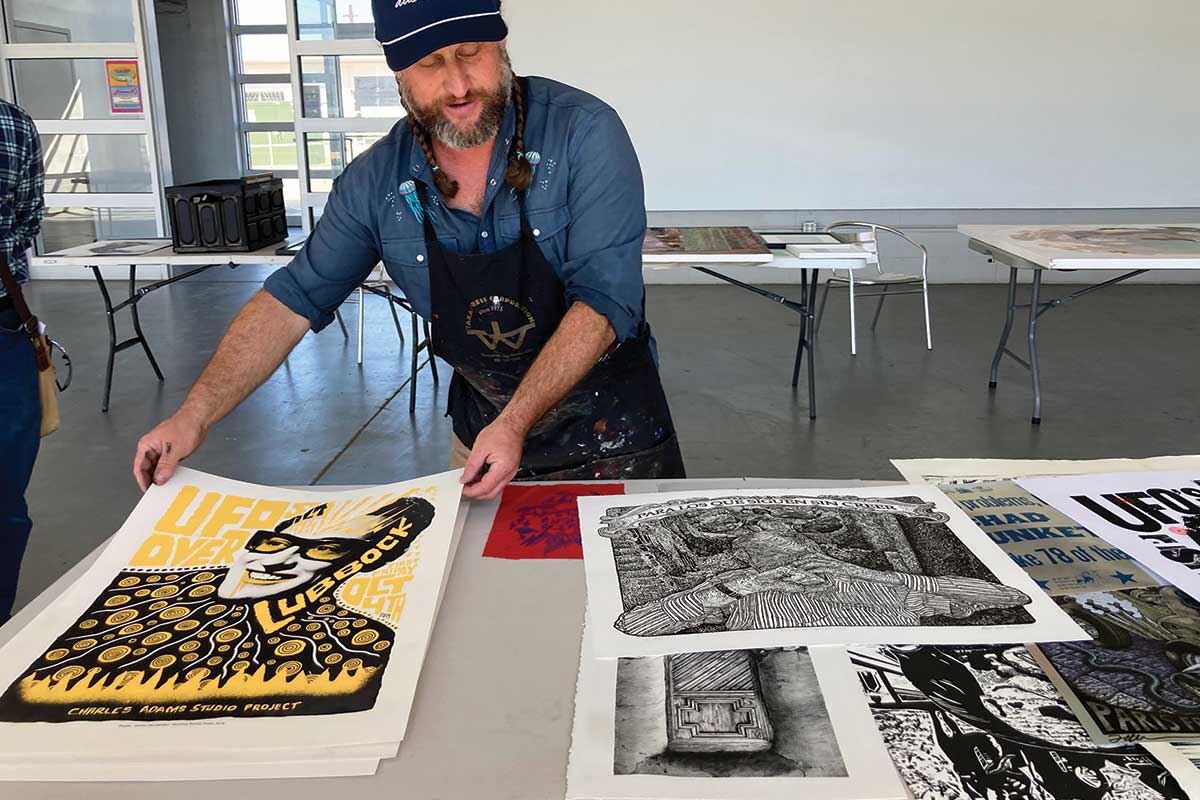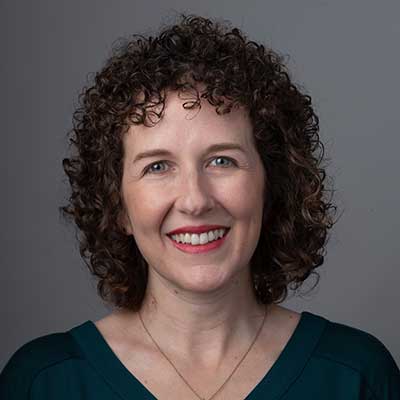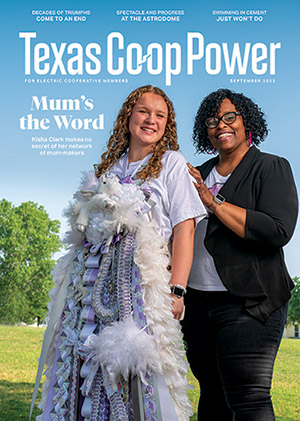If every artist who came to Lubbock stayed in Lubbock, there wouldn’t be enough studio space for them to work.
So says Chad Plunket, the director of the Charles Adams Studio Project, which for the past 10 years has been renting studios to artists in a formerly industrial part of downtown.
Plunket knows how hard it is to stand out in a sea of creative people. The multidisciplinary artist came to Lubbock to earn an undergraduate degree at Texas Tech University in the 1990s and then left for Clemson University in the early 2000s to pursue a Master of Fine Arts in landscape architecture. In 2010, Plunket returned to Lubbock to work with noted gallerist Charles Adams, who wanted to create a downtown space where artists could live and work and open their studios to the public.
“There’s so much competition, and this gives [students] a landing place for a bit to get some experience, and then they are more marketable to the world,” Plunket says.
Adams grew up in the Hub City in the 1940s and ’50s loving art and trying to figure out a way to make a living in it. He enrolled at Texas Tech but got kicked out in the 1960s, Plunket says, so he moved to New York City and eventually opened an eponymous gallery on Bleecker Street in 1969.
By the 1980s, Adams returned to Lubbock to open three galleries bearing his name. He sold art in shopping centers, and students who hoped to sell in his gallery one day worked in studios on campus.
During those years, Lubbock didn’t have an arts district like the one Adams left in Greenwich Village, but that started to change in 2004, when the Louise Hopkins Underwood Center for the Arts opened in a former fire station near the old railyard in downtown Lubbock.
A few years later, Adams decided to consolidate his galleries into a single location downtown and outfit one of the old buildings into his home. Philanthropist Margaret Talkington, who ran a downtown clothing store called Margaret’s, shared Adams’ vision for providing housing and studio space for artists, so she made a donation that brought the Charles Adams Studio Project to life in 2011.
The first decade of CASP drew artists who worked with tools that were hard to buy, move and maintain. “You have artists welding in their garage; it’s not the safest thing to do,” Plunket says. “And a $12,000 etching press, it’s heavy to move.”
A printmaking studio at CASP gets a lot of use with workshops for kids and families making holiday cards. Professional printmakers rent studio time. On the other side of the building, where mechanics used to work on police motorcycles, there’s a metal studio for blacksmithing, welding and metal fabrication with a foundry and two forges.
In the main building, CASP rents eight studios to working artists—a roster that currently includes Flatlands Dance Theatre, the 806 Collective and painter Kristy Kristinek. “It’s an empty room when the artist gets it,” Plunket says. “What the artists show in their individual studios is up to them. Once they rent it, it’s their space.”
Participating artists must agree to open their studios during the city’s First Friday Art Trail, a monthly event that draws 7,000 people to the arts district, which now includes dozens of studios as well as restaurants, a brewery and a bookstore.
A few years ago, CASP added four live-work studios in another once-abandoned city building a block away. “They have 500 square feet of kitchen, laundry, bathroom and living space and 1,100 square feet of studio,” Plunket says. “But the catch is that it’s one- to two-year leases.”
Artists pay between $500 and $700 a month. “It’s only a year or two and then we force them to leave,” Plunket says. “It’s intensive and most of them don’t want to leave, but to keep it fresh, we have to keep new people coming in.”
Among the artists currently living there is Cassandra Trautman, a costume designer and leatherworker who grew up in Austin and San Antonio. With the time she’s spent at CASP, she was able to find a way to stay in Lubbock and make art.
“I often get an idea late at night and have to act on it or I can’t sleep,” Trautman says. “Being in a live-work studio, I’m always just a few steps away from my tools so I don’t lose those ideas before I can act on them.”
Trautman came to Lubbock for her MFA in theater design in 2015, and she’s seen Lubbock’s art scene grow tremendously. “There’s just so much more now—more physical places but also more collectives of artists and art market groups,” she says. “And the new Buddy Holly Hall and Ballet Lubbock building have definitely made the area more noticeable because of its sheer presence from the highway and the art it supports and brings to town.”
The $153 million, 2,290-seat Buddy Holly Hall of Performing Arts and Sciences became a cornerstone of downtown revitalization when it opened in January 2021, just two blocks from CASP’s studios.
“It is very cool to see out-of-town guests figure out the area and realize that we’ve got a lot to offer and more than just the Tech campus here for art and artists,” Trautman says.
The next phase for CASP is to add four more live-work studios, as well as apartment spaces for artists who don’t need a physical studio or heavy equipment, like poets and playwrights.
Adams, 80, has officially retired from his gallery and CASP, but he still enjoys those First Fridays, the 12 gallery shows that CASP coordinates each year and the annual CASPFest, which takes place in October and is a reunion of sorts for all the artists who have come through the project over the years.
“We’ve had so many, you can’t even keep track of them all anymore,” Plunket says. “A lot of them, they get a space here, and now they are all across the country.”



